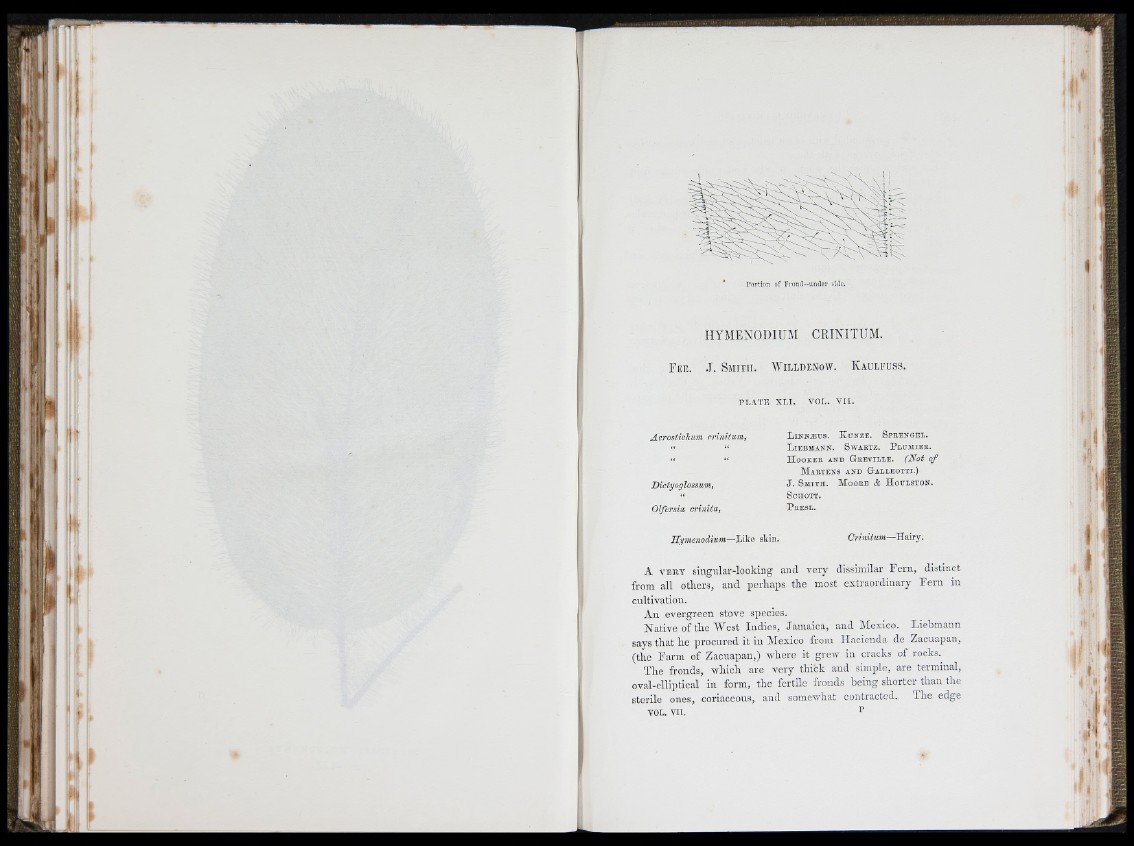
i
Portion of Frond-under side.
HYMENODIUM CIIINITUM.
F e e . j . S m it h . IY il l d e n ow . K a u l f u s s .
P L A T E X L I . V O L . V I I .
Ii
Acrostichum crinitum,
Diotyoglossum,
Olfersia crinita.
L i n n . s u s . K h n z e . S p e e n g e l .
L i e b m a n n . S w a e t z . P l u m i e e .
H o o k e e a n d G k e v i l l e . (N o t o f
A L a e t e n s a n d G a l l e o t t i . )
J . S m i t h . M o o e e & H o u l s t o n .
S c h o t t .
P e e s l .
Hymenodium—Like skin. Crinitum—Hairy.
A V E R Y singular-looking and very dissimilar F e rn , distinct
from all others, and pierhaps the most extraordinary F e rn in
cultivation.
A n evergreen stove species.
N a t iv e of the W e s t Indies, Jamaica, and Alexico. Liebmann
says th a t he procured it in Alexico from Hacienda de Zacuapan,
(the Farm of Zacuapan,) where it grew in cracks of rocks.^
The fronds, which are very thick and simple, are terminal,
oval-elliptical in form, the fertile fronds being shorter th an the
sterile ones, coriaceous, and somevchat contracted. The edge
VOL. VII. P 't i l
]'l 4
r'l